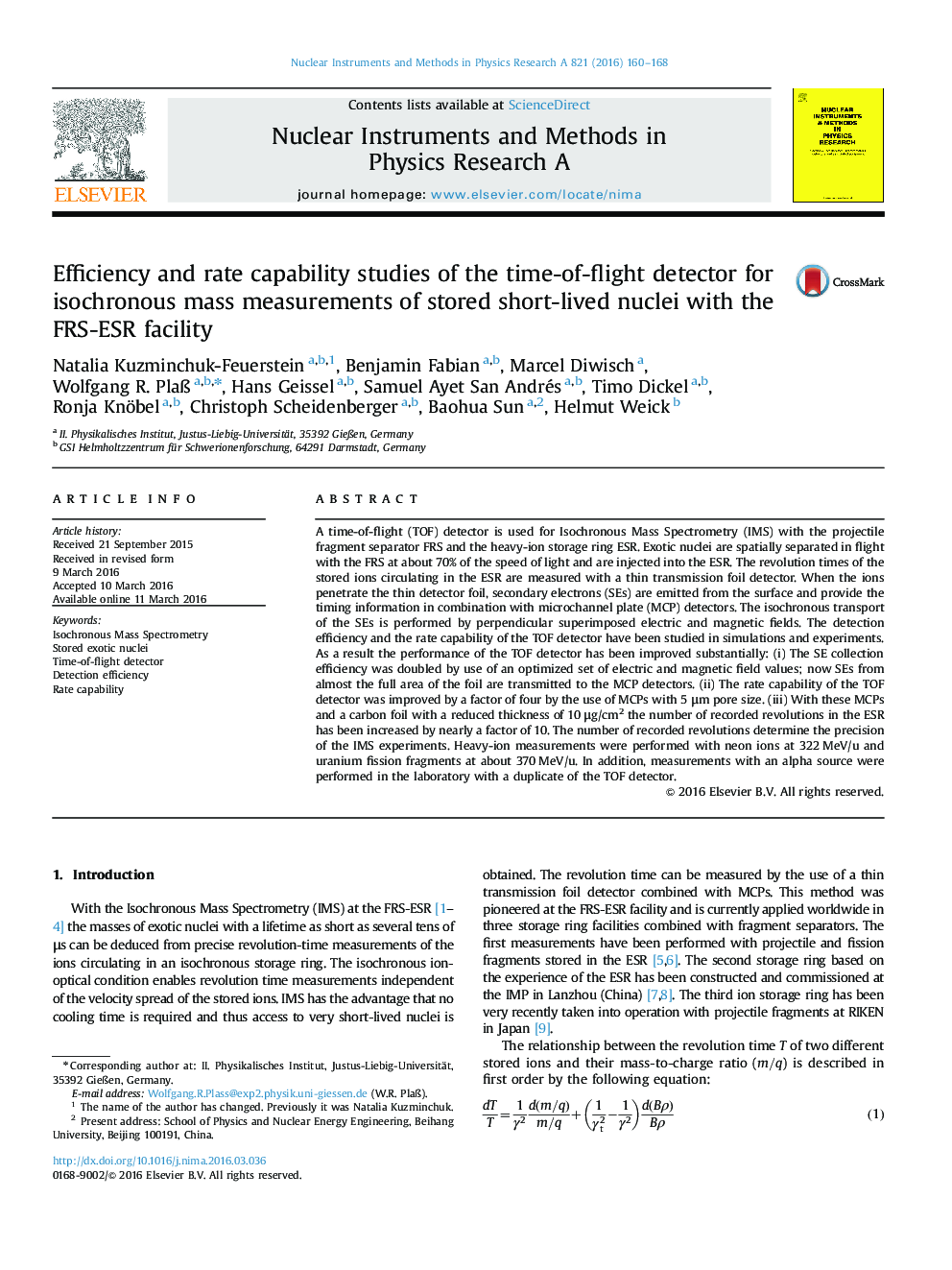| کد مقاله | کد نشریه | سال انتشار | مقاله انگلیسی | نسخه تمام متن |
|---|---|---|---|---|
| 8170282 | 1526305 | 2016 | 9 صفحه PDF | دانلود رایگان |
عنوان انگلیسی مقاله ISI
Efficiency and rate capability studies of the time-of-flight detector for isochronous mass measurements of stored short-lived nuclei with the FRS-ESR facility
دانلود مقاله + سفارش ترجمه
دانلود مقاله ISI انگلیسی
رایگان برای ایرانیان
کلمات کلیدی
موضوعات مرتبط
مهندسی و علوم پایه
فیزیک و نجوم
ابزار دقیق
پیش نمایش صفحه اول مقاله

چکیده انگلیسی
A time-of-flight (TOF) detector is used for Isochronous Mass Spectrometry (IMS) with the projectile fragment separator FRS and the heavy-ion storage ring ESR. Exotic nuclei are spatially separated in flight with the FRS at about 70% of the speed of light and are injected into the ESR. The revolution times of the stored ions circulating in the ESR are measured with a thin transmission foil detector. When the ions penetrate the thin detector foil, secondary electrons (SEs) are emitted from the surface and provide the timing information in combination with microchannel plate (MCP) detectors. The isochronous transport of the SEs is performed by perpendicular superimposed electric and magnetic fields. The detection efficiency and the rate capability of the TOF detector have been studied in simulations and experiments. As a result the performance of the TOF detector has been improved substantially: (i) The SE collection efficiency was doubled by use of an optimized set of electric and magnetic field values; now SEs from almost the full area of the foil are transmitted to the MCP detectors. (ii) The rate capability of the TOF detector was improved by a factor of four by the use of MCPs with 5 μm pore size. (iii) With these MCPs and a carbon foil with a reduced thickness of 10 μg/cm2 the number of recorded revolutions in the ESR has been increased by nearly a factor of 10. The number of recorded revolutions determine the precision of the IMS experiments. Heavy-ion measurements were performed with neon ions at 322 MeV/u and uranium fission fragments at about 370 MeV/u. In addition, measurements with an alpha source were performed in the laboratory with a duplicate of the TOF detector.
ناشر
Database: Elsevier - ScienceDirect (ساینس دایرکت)
Journal: Nuclear Instruments and Methods in Physics Research Section A: Accelerators, Spectrometers, Detectors and Associated Equipment - Volume 821, 11 June 2016, Pages 160-168
Journal: Nuclear Instruments and Methods in Physics Research Section A: Accelerators, Spectrometers, Detectors and Associated Equipment - Volume 821, 11 June 2016, Pages 160-168
نویسندگان
Natalia Kuzminchuk-Feuerstein, Benjamin Fabian, Marcel Diwisch, Wolfgang R. PlaÃ, Hans Geissel, Samuel Ayet San Andrés, Timo Dickel, Ronja Knöbel, Christoph Scheidenberger, Baohua Sun, Helmut Weick,